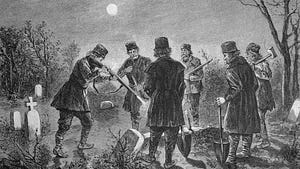Everyone Calls Us Vampires Anyway
The Real Blood-Drinkers of Yesterday and Today
by Shanise Keith • October 29, 2025
It’s October, which means I’m legally required to lean into all the vampire jokes. “Oh, you’re a phlebotomist? So basically you’re a vampire!” Yes, Karen, I’ve heard that one approximately 847 times. But here’s what’s wild: there are people out there who actually identify as vampires and genuinely believe they need to consume blood to stay healthy. Right now. In 2025. In cities like New Orleans and Houston.
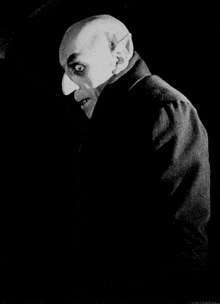
And let’s be honest—our vampire obsession hasn’t exactly slowed down. We’ve gone from creepy Count Dracula, to sparkly vampires playing baseball in the rain (looking at you, Twilight), to the absolutely unhinged nightmare fuel that is Nosferatu, to vampires complaining about their electric bill in What We Do in the Shadows. We can’t decide if we want our vampires to be terrifying monsters, romantic heroes, or dysfunctional roommates who argue about whose turn it is to do the dishes. The vampire genre contains multitudes, apparently. But whether they’re brooding in the forest or attending HOA meetings, we just can’t get enough of blood-drinking immortals. Which, as someone who works with blood for a living, I find both amusing and oddly validating.
So this got me thinking—where did vampire legends even come from? Why have humans been obsessed with blood-drinking creatures as long as we’ve existed? And what’s the connection between folklore, real medical conditions, and people today who identify as vampires?
Turns out, the answers are way more interesting than I expected. Let me tell you a story that starts in 1892 Rhode Island and somehow ends up explaining why your Halloween costume makes more sense than you think.
The Vampire Panic That Happened in America (Yes, Really)
Let’s start with the most unsettling part: the vampire panic that swept through New England in the late 1800s. Not medieval Europe. Not some ancient civilization. Rhode Island. In 1892. There are photographs.
The Brown family of Exeter, Rhode Island, was being destroyed by consumption—what we now know as tuberculosis. George Brown’s wife, Mary, died first in 1883. Then his oldest daughter, Mary Olive, died in 1888. By 1891, his son Edwin was showing symptoms, and his daughter Mercy had fallen ill too.
The townspeople watched this family waste away, one member after another. They became pale, weak, coughed up blood, and slowly died over months or years. And here’s the thing that made everyone panic: TB spreads through prolonged close contact, which means you usually catch it from family members you live with.
So from the outside looking in, it appeared that the dead family members were somehow feeding on the living ones. One person dies, then the next family member gets sick. Then they die, and another gets sick. The pattern was clear, even if the science wasn’t.
The desperate community convinced George Brown to let them exhume the bodies of his wife and daughters to check for signs of vampirism. When they opened Mercy’s grave (she’d died most recently and been buried in frozen ground), her body was relatively well-preserved. To them, this was proof—she hadn’t decomposed enough because she was rising at night to feed on her brother Edwin.
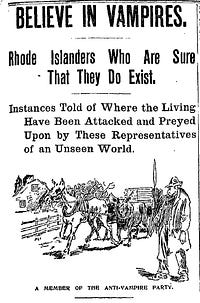
They removed Mercy’s heart and liver, burned them to ash, mixed the ashes with water, and made Edwin drink it. They believed this would break the vampire’s curse and save him.
Edwin died two months later.
This wasn’t an isolated incident. Rhode Island earned the nickname “Vampire Capital of America” because this happened repeatedly throughout the state. Families ravaged by TB would perform these rituals, convinced that the dead were preying on the living.
The thing is—they weren’t entirely wrong about the pattern. TB really was spreading from person to person within families. They just didn’t understand the mechanism. They couldn’t see bacteria. They didn’t know about airborne transmission. What they saw was a mysterious wasting disease that seemed to pass from the dead to the living, and the vampire explanation was the best framework they had.
So Where Did the Vampire Myths Originally Come From?
The Rhode Island panic shows how easily medical conditions can be mistaken for supernatural causes when you don’t have the science to explain what’s happening. And that panic happened barely over 100 years ago, in America, with doctors around.
Imagine going back further, to eras when no one understood infectious disease, blood disorders, or basic anatomy. Suddenly, a lot of vampire folklore starts making sense.
Porphyria - When Your Blood Literally Can’t Handle Sunlight
Porphyria is a group of rare inherited disorders that affect your body’s ability to produce heme—the critical component of hemoglobin we work with every day. And if you had certain types of porphyria in the 1600s, your neighbors would absolutely think you were a vampire.
People with severe porphyria experience extreme photosensitivity. Sunlight causes painful blistering, scarring, and progressive facial disfigurement. The tissue around the lips and gums can be destroyed, causing gums to recede and teeth to look more prominent—almost fang-like. The ears and nose can be damaged, making facial features appear distorted.
These patients would have been forced to avoid daylight entirely. Not because they were evil creatures, but because sunlight literally hurt them.
And here’s where it gets even more interesting: porphyria causes dark red or purple urine because of the porphyrins accumulating in the body. In an era before anyone understood biochemistry, seeing someone with red urine would lead to an obvious (wrong) conclusion: they must be drinking blood.
To make matters worse, some physicians in earlier centuries actually recommended that porphyria patients drink animal blood, thinking it might help their condition. It doesn’t work (the heme can’t be absorbed through digestion), but imagine being a superstitious villager watching your neighbor drink blood on doctor’s orders. That rumor is spreading fast.
Oh, and garlic? The sulfur compounds in garlic can trigger porphyria attacks, causing acute pain. So people with this condition would have had a very real reason to avoid garlic. Not because they’re demonic—because it genuinely hurts them.
Rabies - When Humans Act Like the Animals That Bit Them
If porphyria explains the physical appearance, rabies might explain the violent behavior in vampire legends.
Rabies causes extreme agitation, aggression, hypersensitivity to light and sound, hydrophobia (fear of water), foaming at the mouth, and compulsive biting. The infected person becomes increasingly erratic and violent, often attempting to bite others—which spreads the infection.
Think about which animals are associated with vampires in folklore: bats, wolves, dogs. All rabies carriers. Someone infected with rabies, showing violent behavior and biting people, spreading the disease through those bites? Before we understood viruses, that probably looked exactly like a demonic transformation or curse.
The idea that vampires can transform into bats or wolves makes even more sense when you consider that rabies comes FROM those animals and causes such extreme behavioral changes that the infected person seems like an entirely different creature.
Pellagra - The Dementia and Disfigurement Connection
Pellagra, caused by severe niacin deficiency, was common in areas where corn was a dietary staple. It causes severe photosensitivity, disfiguring skin lesions, dementia, aggression, and physical wasting.
In communities experiencing pellagra epidemics, people would have witnessed neighbors developing disturbing skin conditions, becoming mentally unstable, showing violent behavior, and wasting away. Without understanding nutritional deficiencies, supernatural explanations would have filled the gap.
Fast Forward to 2025: The Modern Vampire Community
Here’s where this story gets really interesting. We’ve been talking about how medical conditions might have created vampire folklore centuries ago, and how tuberculosis created a vampire panic just over 100 years ago.
But there are people alive today who identify as vampires. Not because they’re confused about folklore. Not because they have porphyria. But because they genuinely believe they need blood or energy to maintain their health.
The Sanguinarians - Blood Is Not Optional
“Sanguinarians” are people who identify as needing to drink human blood for their physical, mental, and spiritual well-being. They’re not claiming to be immortal or able to turn into bats—they’re very clear that the supernatural stuff is fantasy. But they describe feeling unwell, lethargic, or experiencing “blood-rage” if they don’t regularly consume blood.
They work with consenting donors called “Black Swans”—people who willingly allow themselves to be cut (usually with sterilized single-use razor blades) so their blood can be consumed. The cuts are shallow, in the top layer of skin, and the amount consumed is small. This isn’t the dramatic neck-biting from movies—it’s a deliberate, safety-conscious process.
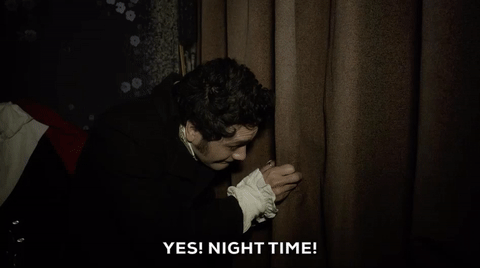
One sanguinarian named Galatea told VICE magazine: “I do not prey on the innocent. I don’t go ripping people’s throats out. I’m quite mature with what I do. I will only drink from consenting donors.” Another described waking up in their kitchen at night, eating raw hamburger from the fridge, having no memory of getting there.
Cities like New Orleans and Houston have surprisingly large vampire communities. There are organized groups like the New Orleans Vampire Association (NOVA) that promote safe practices, educate the public, hold events, and work to dispel harmful misconceptions. These aren’t teenagers playing pretend—these are adults with jobs and families who’ve built entire communities around this identity.
Not everyone in the vampire community drinks blood. “Psychic vampires” describe feeding on life energy or aura rather than physical blood. They talk about drawing energy from others—usually from crowds rather than individuals to avoid harming anyone—to balance what they perceive as a spiritual or psychological deficiency.
Then there are “hybrids” who do both, and “lifestylers” (often spelled “vampyres”) who embrace vampire culture and aesthetics but don’t claim to need blood or energy for survival.
What Do We Actually Know?
Here’s the scientific reality: there’s no medical evidence that anyone needs to consume blood. You can’t absorb heme or other blood components through your digestive system in a way that would address any deficiency. Drinking blood carries serious risks of bloodborne diseases even with testing and precautions.
The medical and psychiatric communities have studied sanguinarians and found no physiological or psychological condition that would necessitate blood consumption. Whatever these individuals are experiencing, it’s not explained by current medical science.
But these communities exist. They’re organized. They have ethics, hierarchies, philosophies, and social structures. People like Michelle Belanger have written extensively about vampire identity and energy work. Annual events like the Endless Night Vampire Ball draw thousands of attendees. Father Sebastiaan, a prominent fangsmith, has been organizing the vampire community since the 1990s.
They’re real people navigating real experiences, even if those experiences don’t fit into our current medical framework.
What Does Blood Mean to Humans, Anyway?
Here’s what strikes me about all of this: humans have been obsessed with blood for as long as we’ve existed. Blood has been sacred, magical, powerful, terrifying, and life-giving across virtually every culture throughout history.
People understood instinctively that blood was life, even before they understood hemoglobin or oxygen transport or infectious disease. When someone bled too much, they died. When someone looked pale and weak, we said they were “bloodless.” Blood was obviously, visibly connected to life itself.
So when mysterious diseases made people waste away, turn pale, and seem drained of life—of course people thought about blood. When strange conditions made people avoid sunlight and appear disfigured—of course communities feared them. And when those patterns repeated, when disease spread from person to person in ways no one could explain—of course supernatural explanations filled the gaps.
The Rhode Island vampire panic of 1892 shows that even with doctors present, even with medical knowledge advancing, people still reached for the vampire explanation when faced with a disease they didn’t understand. TB was killing thousands of people, and the pattern of family transmission was clear and terrifying. The vampire framework gave them something to do, some way to fight back, even if it was tragically wrong.
Where We Are Now: The Modern Keepers of Blood
So here we are in 2025. We understand hemoglobin now. We know about infectious disease, blood disorders, and the actual mechanisms behind conditions like TB and porphyria. We can diagnose, treat, and sometimes cure the conditions that once seemed supernatural.
And yeah, people still call us vampires.
I get annoyed by that joke as much as anyone else, but it also kind of makes sense. Historically, vampires represented everything mysterious and frightening about blood. People feared it, revered it, and built entire mythologies around it.
Today, we’re the ones who’ve taken that fear and mystery and made it routine. We handle blood safely, collect it properly, ensure the samples are good so others can analyze them and find answers. We’re the first step in turning that ancient mystery into useful medical information. We’re not creatures who drain life—we’re professionals who help protect it by making sure the right blood gets to the right place for the right tests.
We’re the modern-day gatekeepers of blood collection, and that’s pretty cool when you think about it.
As for the people who identify as vampires today? I honestly don’t know what to make of it. The science says they don’t need blood. But they’re organizing communities, creating ethics around consent and safety, and finding meaning in this identity. That’s pretty interesting, even if we don’t understand it.
And the historical medical conditions that might have inspired vampire folklore? They’re worth remembering because they remind us how recently we didn’t understand basic aspects of health and disease. The Rhode Island vampire panic was 1892—my great-grandparents were alive then. That’s not ancient history. That’s frighteningly recent.
People still have an obsession
The Real Horror (And the Real Progress)
You want to know what’s actually scary? It’s not vampires or supernatural creatures. It’s how recently these conditions were killing people in massive numbers without anyone understanding why. It’s how easily fear and misunderstanding can lead communities to desecrate graves and make dying people drink the ashes of their loved ones.
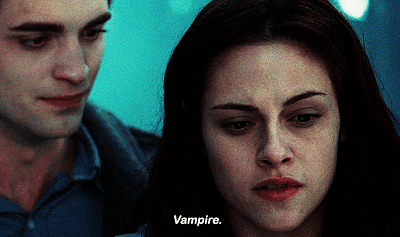
But the flip side? We’ve come so incredibly far. We have antibiotics for TB. We can diagnose and manage porphyria. We’ve eliminated pellagra as a public health crisis in developed countries. We have rabies vaccines and post-exposure treatments.
We’ve turned mystery into knowledge, and fear into healing.
And if someone calls you a vampire at work this month, just smile and say: “Yeah, but I’m the kind that actually helps people. Plus, my patients usually survive the encounter and get useful lab results. So really, I’m the best kind of vampire.”
So this Halloween, enjoy the vampire costumes and spooky movies. Embrace the jokes about being a phlebotomist-vampire. But maybe also take a moment to appreciate how far we’ve come in understanding blood and disease.
Happy Halloween, everyone. May your veins be easy to find, your tourniquet time stay under one minute, and your knowledge of blood keep advancing. That’s the real magic.
Have you heard good vampire jokes from patients? I’d love to hear your stories!
Related Posts and Information
overall rating: my rating: log in to rate

